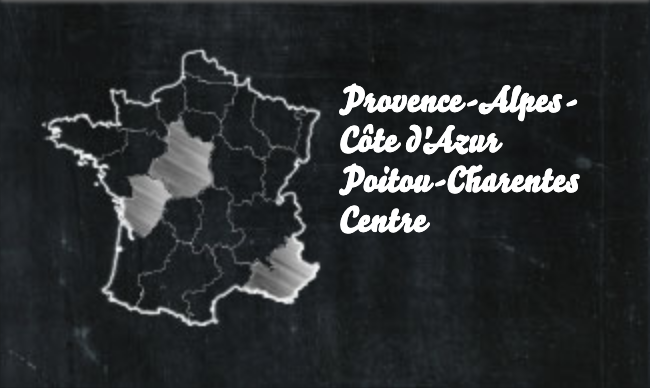Goat cheeses are undoubtedly the most ancient of all cheeses: in 800 BCE, goats supplied milk and meat in all of the countries on the Mediterranean. Considered for a long time as poor man’s cheese, goat cheese figured out how to win over the gourmets: a cheese connoisseur is only that if he or she has experienced the symphony that the variety of goat cheese flavours and aromas has to offer.
Goat’s cheese

Origin
Characteristics
– AOC
– Chabichou du Poitou, Crottin de Chavignol, Picodon de l’Ardèche or Picodon de la Drôme, Pouligny-Saint-Pierre, Rocamadour, Sainte-Maure-de-Touraine, Selles-sur-Cher, Valençay.
– The common denominator for all of these cheeses is their primary ingredient – goat cheese – and not the way they are made.
– The goat cheese family includes fresh cheeses, soft cheeses with plain or mouldy rinds, uncooked pressed cheeses, blue-mould cheeses, and pressed cheeses.
– Annual Production: 45,000 tonnes, of which 6,100 tonnes are designated by AOC.
Gastronomie
Warm goat cheese is well-liked for creating numerous hors d’oeuvres like goat cheese with bacon on a bed of salad. For a long time, goat cheeses were quite seasonal, since goats only give milk between March and October. Today, thanks to artificial insemination, which extends the reproductive period, and to freezing the curd produced during the peak season, goat cheese can be produced year-round.
Production
There are three main types of cheese according to their texture and ageing conditions, which partially influence the aroma and the taste. Lactic curds turn into cheeses that are white, firm, and grainy, like Selles-sur-Cher or Valençay. They also turn into fresh cheeses. Mixed curds turn into soft cheeses, which, during ageing, turn from firm to flexible. This is the case for Baune or Briques de Chèvre. Rennet curds turn into blue-mould cheeses or cheeses such as Tomme de Chèvre or Chevrotin after pressing.
It is likely that goat’s cheese was present in Gaul well before the arrival of the Romans. However, it was the Moorish invaders who introduced the Mediterranean goat to Poitou-Charentes in western France, where they have been raised ever since. Today, it is the premier French region for dairy products made from goat’s milk.
The goat cheese family is particularly diverse: it includes cheeses of every shape and size, fresh and aged, and whose exteriors can have very diverse appearances. In addition to the eight cheeses that have been granted AOC and amongst the hundred or so goat cheeses that make up as many regional and local specialities, we can list Banon, Brique du Forez or Brique du Livarois, Bûchette d’Anjou, Chevrotin des Aravis, Clochette, Galet Solognot, Pélardon des Cévennes, Sancerre, and Saint-Félicien.
Production Area
Goat cheeses are made in many different places throughout France, particularly in Poitou-Charentes and Pays de la Loire, Burgundy and in the Massif Central, but also in Savoie, in all of southern France, and in Corsica.